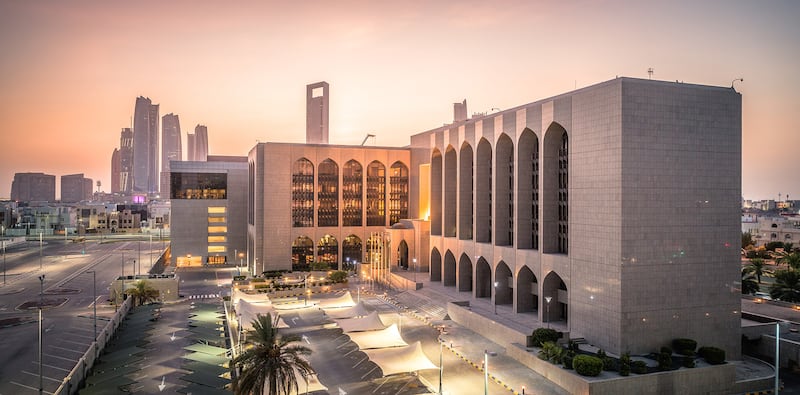Economic activity in the UAE, which recovered significantly from the coronavirus-induced slowdown in 2021, is expected to continue improving this year despite global headwinds, the UAE Central Bank said.
The regulator “projects a positive outlook for the UAE’s economy and financial system in 2022", Central Bank Governor Khaled Balama said in its latest Financial Stability Report.
“The global macro-financial outlook, however, will be negatively affected by supply chain disruptions, rising inflationary pressures and further escalating geopolitical tensions.”
The Central Bank expects the UAE economy to post its strongest annual expansion since 2011 this year after it grew by 8.2 per cent in the first three months of this year on higher oil prices and measures to mitigate the impact of the Covid-19 pandemic.
The various fiscal support measures taken by the UAE government during the pandemic were instrumental in protecting the stability of the economy and the financial system, the regulator said.
The UAE introduced an economic stimulus package worth Dh388 billion ($105.65bn) since the pandemic tipped the world economy into its worst recession since the 1930s.
“As part of the UAE’s overarching efforts, the Central Bank launched the Targeted Economic Support Scheme [Tess] in March 2020. These support measures safeguarded the UAE’s financial system and supported the resilience of the country’s economy,” Mr Balama said.
The Tess programme was aimed at boosting liquidity in the financial and banking sector.
As the outlook improved, the regulator announced a gradual Tess exit strategy, with the first phase completed by the end of 2021 and the second phase concluded by the end of June 2022.
The Central Bank will maintain the final phase of Tess measures during the second half of 2022, it said in the report.
Support measures that temporarily remain in place include reduced reserve requirements, lower down payments for new mortgage loans and the prudential filter.
The Central Bank is “closely monitoring the evolving situation globally and stands ready to take additional measures if necessary”, it said.
The UAE, the Arab world’s second-largest economy, is expected to grow by 5.4 per cent and 4.2 per cent in 2022 and 2023, respectively, according to the latest projections by the Central Bank.
The International Monetary Fund projects that the UAE economy will grow 4.2 per cent this year while Emirates NBD forecasts growth of 5.7 per cent and Abu Dhabi Commercial Bank expects a 6 per cent expansion, supported by a sharp rise in the oil sector.
There is a probability of even stronger growth this year as a result of higher oil output, rising crude prices and government initiatives to double the size of the manufacturing sector by 2031, the Central Bank said.
Oil prices rose this year after Russia’s military offensive in Ukraine began in February.
Brent, the key benchmark for two thirds of the world's oil, closed in on $140 in March before losing some of those gains on fears of slowing demand. However, prices remain between $95 and $100 a barrel.
The Central Bank's latest report also highlighted the recovery of the nation’s banking system and the broader financial system to pre-pandemic levels.
“The UAE banking system demonstrated resilience in weathering the pandemic’s repercussions while also having a supportive role in providing relief to affected households and businesses,” the report said.
Banks maintained adequate capital and liquidity buffers while profitability rebounded towards pre-pandemic levels in 2021 as the economic recovery started to gain traction.
“Lending growth rebounded in the second half of 2021 as business activities started to recover and pandemic containment measures were gradually lifted. The credit demand outlook is likely to improve in 2022, along with the recovery of global and domestic economies,” the report said.
The report also outlined some of the key risks for the banking system, which stem from the potential deterioration of asset quality and insufficient change in the business model of banks, in light of rapid digitisation, climate change and rising governance requirements.
While the credit risk outlook has improved in the UAE, as reflected in the positive rating revision of most UAE banks by credit rating agencies, lenders should identify long-term asset quality concerns and make adequate provisions, the regulator said.
The Central Bank’s approach focuses on “identifying and mitigating potential systemic risks” and protecting the stability and resilience of the UAE financial sector, Mr Balama said.
The regulator said it continues to analyse evolving risks in the financial system, including environmental, social and governance risks, as well as the financial implications of geopolitical tension, compliance in the fight against money laundering and the financing of terrorism and elevated cyber risks.






